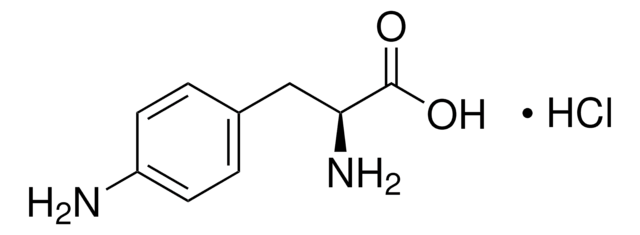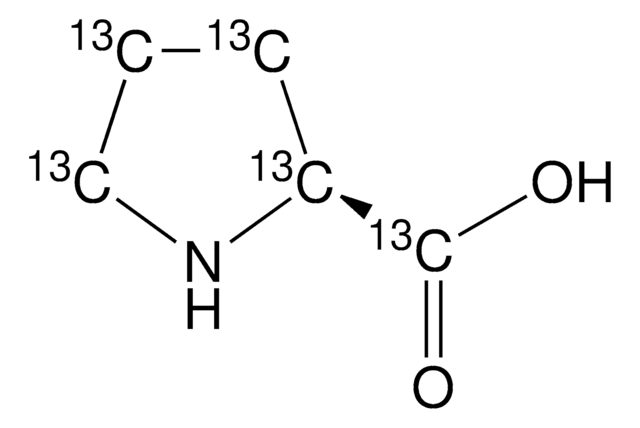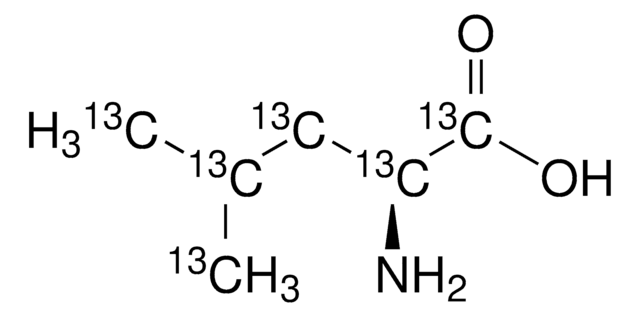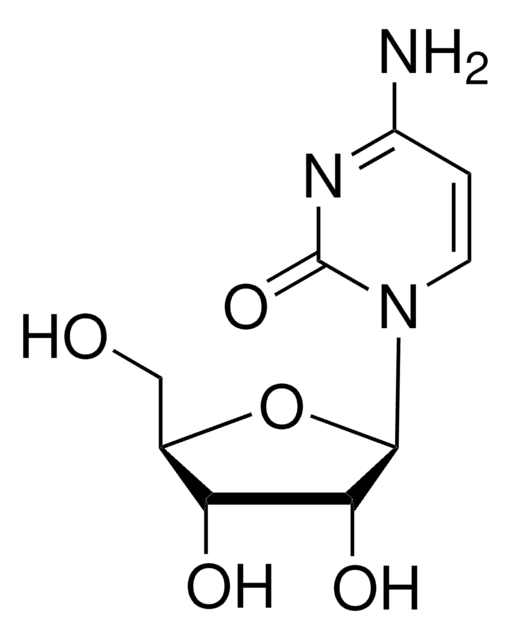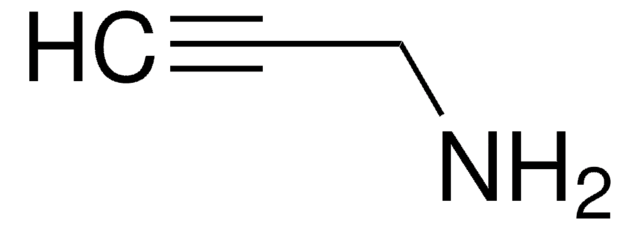909564
4-Azido-L-phenylalanine
≥98%
Sinónimos:
3-(p-Azidophenyl)-L-alanine hydrochloride, 4-Azidophenylalanine hydrochloride, 4-N3-L-Phenylalanine, p-Azido-L-phenylalanine hydrochloride, p-Azido-Phe*HCl, p-Azidophenylalanine hydrochloride, H-4-Azido-Phe*HCl, H-L-4-Azido-Phe-OH, H-L-Phe(4-N3)-OH, H-Phe(4-N3)*HCl, Phe(pN3)*HCl
About This Item
Productos recomendados
Análisis
≥98%
formulario
powder
idoneidad de la reacción
reaction type: click chemistry
reaction type: solution phase peptide synthesis
disponibilidad
available only in USA
temp. de almacenamiento
−20°C
InChI
1S/C9H10N4O2/c10-8(9(14)15)5-6-1-3-7(4-2-6)12-13-11/h1-4,8H,5,10H2,(H,14,15)/t8-/m0/s1
Clave InChI
NEMHIKRLROONTL-QMMMGPOBSA-N
Aplicación
Producto relacionado
Palabra de señalización
Danger
Frases de peligro
Consejos de prudencia
Clasificaciones de peligro
Self-react. C
Código de clase de almacenamiento
5.2 - Organic peroxides and self-reacting hazardous materials
Clase de riesgo para el agua (WGK)
WGK 3
Punto de inflamabilidad (°F)
Not applicable
Punto de inflamabilidad (°C)
Not applicable
Elija entre una de las versiones más recientes:
Certificados de análisis (COA)
¿No ve la versión correcta?
Si necesita una versión concreta, puede buscar un certificado específico por el número de lote.
¿Ya tiene este producto?
Encuentre la documentación para los productos que ha comprado recientemente en la Biblioteca de documentos.
Nuestro equipo de científicos tiene experiencia en todas las áreas de investigación: Ciencias de la vida, Ciencia de los materiales, Síntesis química, Cromatografía, Analítica y muchas otras.
Póngase en contacto con el Servicio técnico

